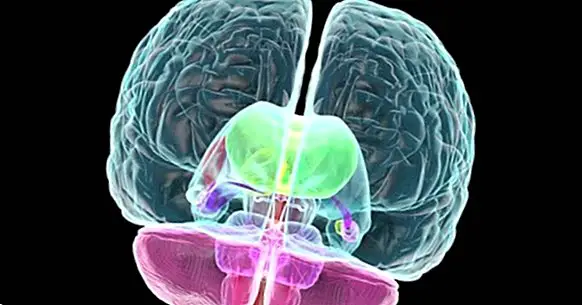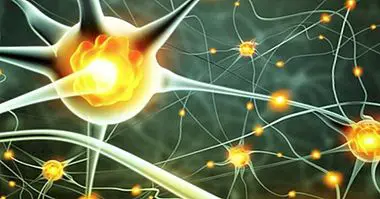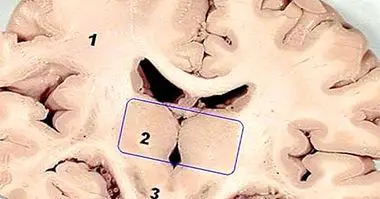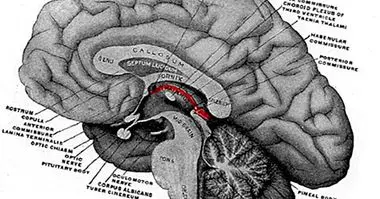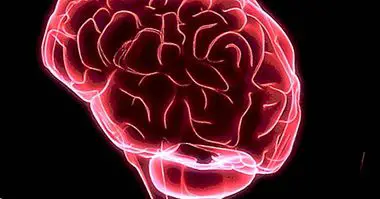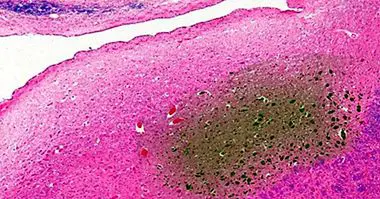Limbic system: the emotional part of the brain
The limbic system It is one of the most interesting and important networks of neurons when it comes to studying human behavior, since it is one of the parts of the brain with a more relevant role in the appearance of moods.
That is why it is sometimes called "the emotional brain". But ... what exactly is the limbic system and what are its functions?
What is the limbic system?
The limbic system is a set of structures of the brain with diffuse boundaries that are especially connected to each other and whose function has to do with the appearance of emotional states or with what can be understood by "instincts", if we use this concept in its sense wider. Fear, happiness or anger, as well as all emotional states full of nuances, they have their main neurological basis in this network of neurons .
Thus, at the center of the limbic system's usefulness are the emotions, that which we link with the irrational. However, the consequences of what happens in the limbic system affect many processes that, theoretically, we do not have to associate with the emotive face of the human being, such as memorization and learning.

The limbic system in learning
More than 200 years ago, an English philosopher named Jeremy Bentham, one of the fathers of utilitarianism, proposed the idea of a way to calculate happiness based on a classification of criteria to differentiate pain from pleasure. In theory, from this calculation we could know how useful or unhelpful each situation is, depending on how happy we were with this formula.
Simplifying a lot, it can be said that, in a way similar to that proposed by Bentham, the limbic system is something like the judge who determines what deserves to be learned and in what way it has to be memorized depending on the pleasurable or painful sensations that each situation produces.
That is, the way in which the positive or negative value of each one of the experiences that are lived depends on the limbic system. But, in addition, the way in which the limbic system influences our way of learning will have repercussions on our personality.
Some examples
For example, a mouse that has passed through the operant conditioning and has come to associate the action of moving a lever with the appearance of food in a drawer of his cage, he learns that moving the lever is fine thanks to the pleasurable sensations that he has to see the food and taste it, that is, based on something based on the euphoria of discovering a piece of cheese when you are hungry and in the pleasant sensations produced by eating it.
In humans, too it can be understood that those situations in which pleasure is more sublimated in a complex way , like what it feels like to listen to a good recital of poetry, teaches us that returning to the cultural association in which we have heard it is "useful". The limbic system remains the part of the brain responsible for this.
The parts of the limbic system
It should be remembered that the limbic system is not exactly an anatomically accurate region of the brain , but rather it is a network of neurons distributed by the brain and that are mixed between many different structures. That is to say, that the concept of the limbic system has more to do with the function of these zones than with their nature as a specific and well-delimited part of the brain.
However, it is possible to identify parts of the brain that play a very important role within the network of interconnections that is the limbic system and that, therefore, serve to give us an idea of which are the areas through which this circuit passes. . The parts of the limbic system are the following:
Hypothalamus
One of the diencephalon areas most involved in the regulation of emotions , by its connection with the pituitary gland and therefore with the endocrine system and all parts of the body in which all types of hormones are released.
To read more about this part of the brain you can read this article about the thalamusHippocampus
The hippocampus has a very important function in mental processes related to memory , both in the memorization of abstract experiences and information and in the recovery of memories. The hippocampi are located on the inner side of the temporal lobes, very close to the thalamus and the tonsils.
The hippocampus is framed within what is known as the cortex of the limbic lobe, or arquicorteza, which is one of the oldest parts of the cerebral cortex; that is to say, that appeared very early in the line of evolution that has led to the appearance of the human being.
Amygdala
The cerebral tonsils are located next to each hippocampus , and therefore there is one in each of the hemispheres of the brain. Their role is related to the learned emotional response that certain situations arouse, and therefore they are involved with emotional learning, for which they have a role in the limbic system.
Orbitofrontal cortex
At the limits of the limbic system is the orbitofrontal cortex, which is the outlet valve of the "emotional" orders towards areas of the frontal lobe responsible for the planning and creation of strategies. So, has an important role in placating the "irrational impulses" that come from the limbic system and make pass only part of these signals, those that will serve to define well the objectives of the actions with medium or long term goals.
Is it correct to speak of an "emotional brain"?
In popular culture there is the widespread idea that the human brain has an emotional and a rational part . The emotional brain, which we would have inherited from our most primitive ancestors, would be the one thanks to which we have emotions, feelings and impulses difficult to suppress, while the rational brain would be responsible for the most conscientious and logical analysis of the situations we live or imagine.
However, as we have seen, the limbic system is deeply interconnected with other areas of the brain not directly identified with what we know as emotions, so the idea that we have an emotional brain is, to a large extent, an overly imaginative way of understanding this network of connections .
In addition, we must bear in mind that if we talk about an emotional brain is to oppose this concept to the idea of a rational brain, which would be represented by the most superficial areas of the frontal lobe and the parietal. However, if in the case of the limbic system at least we know that it is a set of very old structures in our evolutionary line, the idea that there is a part of our body made to think rationally with a certain autonomy is directly an illusion.
Rationality is not innate
There are our ancestors who lived only with a limbic system and without the ability to think following the guidelines of what we understand as rationality, but in the history of the human being the rational thought is rather an exception . Not only do we not think rationally most of the time, but until a few thousand years ago rationality did not exist and, in fact, in some non-westernized cultures adults tend not to reach the fourth stage of cognitive development proposed by Jean Piaget .
That is, what we call rationality is more a product of history than the result of a set of brain structures designed for it. The limbic system is, in any case, one of the regions of the brain that allow the appearance of rational thought, and not vice versa.

